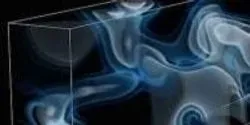origin of life

A Johns Hopkins University-led team links new organic carbon species in deep fluids to the formation of diamonds — and life itself.

Twisted light from ancient stars may have played a role in locking in aspects of the structure of life on Earth, and new findings from the University of Michigan provide insights into how that process may have occurred.

Mimicking natural evolution in a test tube, scientists at The Scripps Research Institute (TSRI) have devised an enzyme with a unique property that might have been crucial to the origin of life on Earth.

Using extremely faint light from galaxies 10.8-billion light years away, scientists have created one of the most complete, three-dimensional maps of a slice of the adolescent universe. The map shows a web of hydrogen gas that varies from low to high density at a time when the universe was made of a fraction of the dark matter we see today.

Up to half of the water on Earth is likely older than the solar system itself, University of Michigan astronomers theorize.













